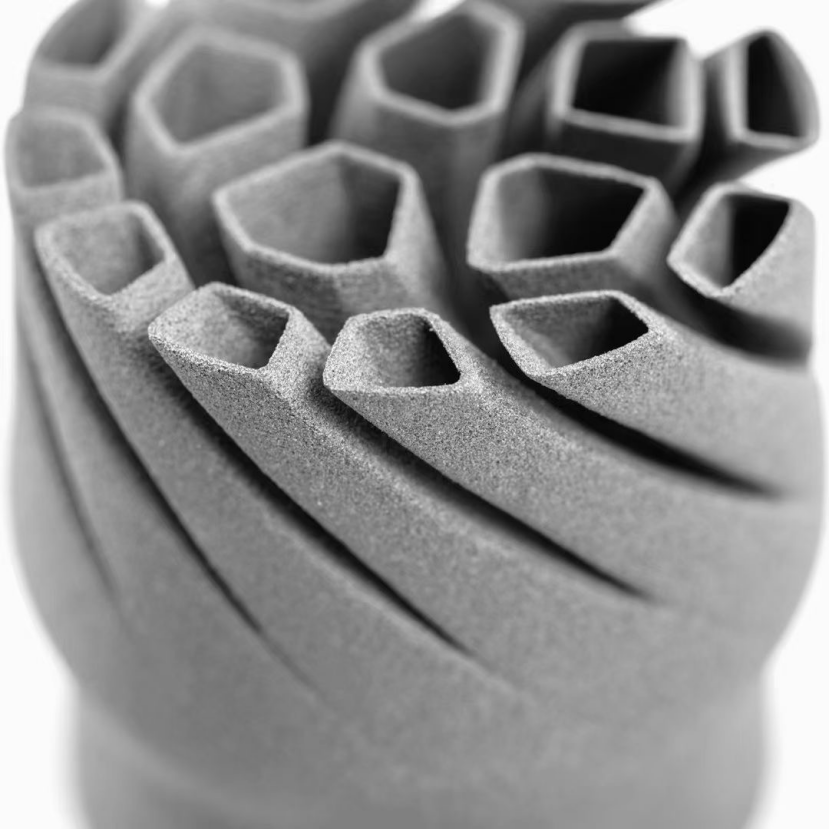The Revolutionary Impact of Advanced Sintering Technologies in Additive Manufacturing
The manufacturing landscape is witnessing a profound transformation with high-speed sintering 3D printing emerging as a game-changing technology. This innovative approach combines the precision of traditional additive manufacturing with unprecedented production speeds, marking a new era in industrial fabrication. As we approach 2025, this technology continues to reshape how we think about mass production, prototyping, and customized manufacturing solutions.
The evolution of high-speed sintering 3D printing has been remarkable, offering manufacturers the ability to produce complex geometries with exceptional detail while maintaining efficiency at scale. This technology harnesses infrared heat and specialized sintering agents to transform powder materials into solid objects, layer by layer, at speeds previously thought impossible.
Core Technology and Operating Principles
The Science Behind Rapid Sintering
High-speed sintering 3D printing operates on a sophisticated principle that combines digital imaging and materials science. The process begins with a thin layer of powder material spread across the build platform. Unlike traditional methods, high-speed sintering utilizes an infrared lamp and a specialized ink deposition system. The ink absorbs infrared radiation, causing localized heating that fuses particles together precisely where needed.
The thermal energy transfer in high-speed sintering 3D printing is exceptionally efficient, allowing for rapid solidification of materials without compromising structural integrity. This precise control over the sintering process enables the creation of parts with excellent mechanical properties and surface finish.
Material Compatibility and Innovation
The versatility of high-speed sintering 3D printing extends to an impressive range of materials. From engineering-grade polymers to advanced composites, the technology accommodates various powder-based materials. Recent developments have expanded the material portfolio to include high-performance polymers like PA12, TPU, and even specialized blends with enhanced properties.
Material scientists continue to push boundaries, developing new powder formulations specifically optimized for high-speed sintering processes. These innovations focus on improving flow characteristics, particle size distribution, and thermal response, resulting in better part quality and processing efficiency.
Production Benefits and Industrial Applications
Manufacturing Efficiency and Scalability
The industrial adoption of high-speed sintering 3D printing has been driven by its remarkable production capabilities. Companies implementing this technology report significant reductions in manufacturing time, with some achieving up to 20 times faster production rates compared to traditional methods. The ability to process multiple parts simultaneously further enhances production efficiency.
The technology's scalability makes it particularly attractive for both small-batch production and mass manufacturing scenarios. As build volumes increase and system automation improves, high-speed sintering continues to demonstrate its value in various industrial settings.
Cost-Effective Production Solutions
Economic advantages of high-speed sintering 3D printing extend beyond mere speed improvements. The technology offers significant cost reductions in terms of material usage, energy consumption, and labor requirements. The precision of the process minimizes waste, while the automated nature of operations reduces the need for extensive manual intervention.
Investment in high-speed sintering systems often shows favorable returns, especially when considering the reduced tooling costs and increased production flexibility. Companies can rapidly switch between different products without incurring substantial changeover expenses.
Advanced Features and Technical Specifications
Process Control and Monitoring
Modern high-speed sintering 3D printing systems incorporate sophisticated monitoring and control mechanisms. Real-time process parameters, including temperature distribution, layer thickness, and material flow, are continuously monitored and adjusted to maintain optimal printing conditions. Advanced sensors and imaging systems ensure consistent part quality throughout the build process.
Machine learning algorithms increasingly play a crucial role in process optimization, analyzing vast amounts of data to fine-tune printing parameters automatically. This integration of artificial intelligence enhances both print quality and system reliability.
Resolution and Build Volume Capabilities
The technology achieves impressive resolution levels, with layer thicknesses typically ranging from 80 to 120 microns. Build volumes continue to expand, with newer systems offering substantial printing areas that accommodate larger parts or multiple components in single builds. The combination of high resolution and generous build volumes makes high-speed sintering particularly versatile across different applications.
Enhanced thermal management systems enable consistent results across the entire build volume, ensuring uniform part properties regardless of position or size. This reliability is crucial for industrial-scale production applications.
Future Developments and Industry Trends
Emerging Technologies and Innovations
The future of high-speed sintering 3D printing looks promising with several technological advances on the horizon. Research institutions and manufacturers are exploring new heating mechanisms, including advanced laser systems and novel energy delivery methods. These developments aim to further increase processing speeds while maintaining or improving part quality.
Integration with Industry 4.0 principles continues to evolve, with enhanced connectivity and data analytics capabilities becoming standard features. The technology is moving towards fully automated production environments, where high-speed sintering systems operate as part of connected manufacturing ecosystems.
Market Growth and Industry Adoption
Market analysts project significant growth in the high-speed sintering 3D printing sector through 2025 and beyond. Industries ranging from aerospace to consumer goods are increasingly incorporating this technology into their manufacturing strategies. The ability to produce complex geometries quickly and efficiently makes it particularly attractive for sectors requiring rapid product development cycles.
As the technology matures, we're seeing increased adoption in new application areas, including medical devices, automotive components, and sustainable manufacturing initiatives. This expansion is driven by continuous improvements in material properties and process reliability.
Frequently Asked Questions
What makes high-speed sintering different from traditional 3D printing methods?
High-speed sintering 3D printing distinguishes itself through its unique combination of infrared heating and selective ink deposition, enabling significantly faster production speeds compared to traditional methods. The technology also offers better scalability and cost-effectiveness for volume production.
What types of materials can be used with high-speed sintering?
The technology is compatible with a wide range of powder-based materials, including engineering polymers like PA12, TPU, and specialized composites. New materials are continuously being developed and optimized specifically for high-speed sintering processes.
How does high-speed sintering contribute to sustainable manufacturing?
High-speed sintering 3D printing promotes sustainability through minimal material waste, energy-efficient processing, and the ability to produce parts locally, reducing transportation impacts. The technology also enables design optimization for lighter parts, contributing to reduced material consumption.

